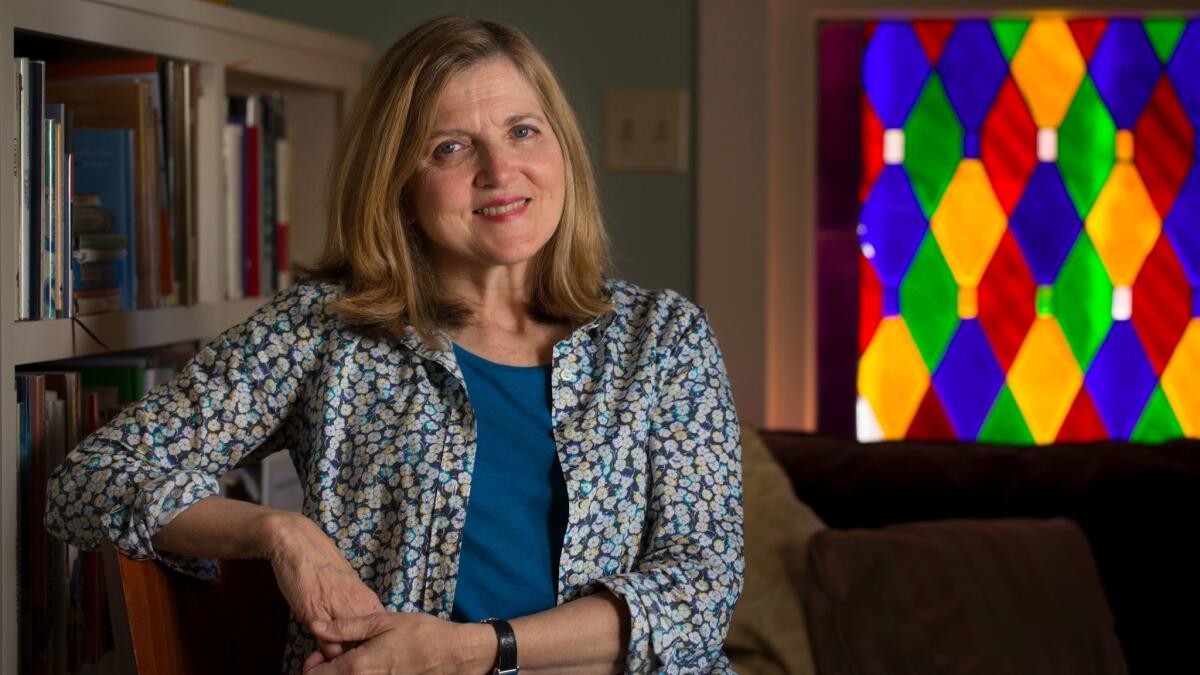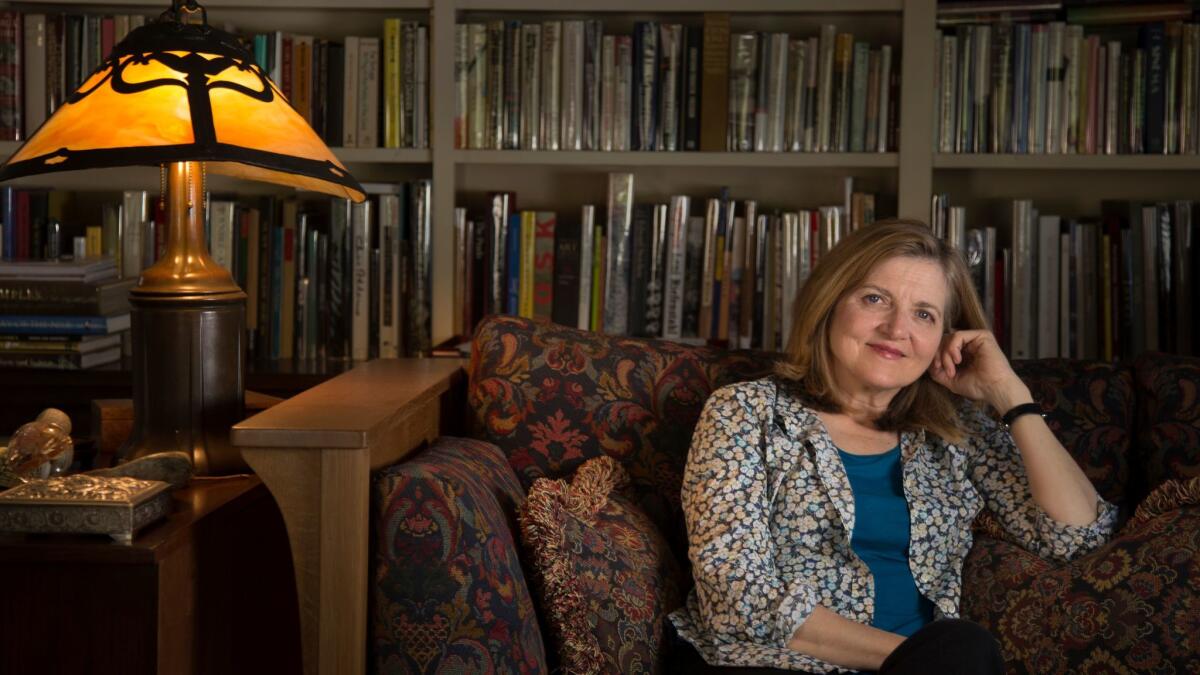It took Robin Swicord 10 years to get a directing job after ‘The Jane Austen Book Club.’ Why?

- Share via
By the time Robin Swicord convinced Hollywood executives that she was capable of directing a feature film, she’d already been working in the movie business for nearly three decades. She was a sought-after screenwriter, known for adapting iconic literary titles like “Little Women,” “Memoirs of a Geisha” and “Matilda.”
So when she got a job directing “The Jane Austen Book Club” — a low-budget art-house film about women who draw parallels between their romances and the author’s novels — frankly, she felt it was long overdue. The 2007 release went on to earn positive reviews, grossing more than $7 million worldwide. She felt confident that she was about to enter into a new phase of her career.
And yet no one wanted to give Swicord another directing gig.
“I was naive enough to think that if you exhibit competence in something, the movie makes some money and people are happy, that you move onto something of equal size — or larger,” she says. “No jobs came to me. Zero. Lost, in every case, to a man.”
She nearly landed one job directing a $22-million project, but the film fell apart when a producer feared Swicord couldn’t “handle a movie of that size.” Discouraged, she told her agent she would helm a less-expensive movie: “I can’t let this door just be closed in my face.”
This is all to explain why it’s taken Swicord 10 years to direct her second feature film. The drama, called “Wakefield,” was shot in 20 days on a $3.7-million budget. (“The Jane Austen Book Club,” by comparison, was made in 30 days with $6 million.) Based on a short story by E.L. Doctorow, it stars Bryan Cranston as the disgruntled lawyer Howard Wakefield, a man so unhappy with the humdrum pace of his daily life that he decides to abandon his job and family and hide out in the attic of his garage. There, he secretly spies on his wife (Jennifer Garner) and kids, living like a vagrant and relishing his lack of responsibility.
Swicord first read Doctorow’s story in the New Yorker and found herself troubled by Wakefield’s behavior. “It seemed like something that someone with only a lot of white male privilege, frankly, would be able to do and kind of get away with,” she says.
As she talks, Swicord, 64, is sitting at the dining table of the Santa Monica Craftsman she’s shared with her husband, fellow screenwriter Nicholas Kazan, for more than three decades. It was in this home — with a rusting Underwood typewriter on the front porch and bougainvillea in bloom on the back — that the couple raised their two daughters, the actresses Zoe and Maya Kazan.

The blue bungalow is so homey — bookshelves overflowing, family photos adorning a gallery wall — that it’s difficult to imagine anyone wanting to escape. But Swicord acknowledges that, like Wakefield, she’s had moments in which she wished she could disappear from her own life.
“I don’t think there’s a person who lives in L.A. who hasn’t thought when they get on the freeway sometime, ‘I could just keep going,’” she says, her husband walking past to warm something in the microwave. “My husband and I got married in 1983, and we’ve been married long enough to know that there are seasons in a marriage. You can go through a period where you don’t like each other as much as you did last year. And two years later, you’ll be madly in love again. It’s this weird thing — almost like nature, it has its own cycles.”
It was through her relationship with Kazan that Swicord began to realize how differently men and women are treated in the film industry. Once, she recalls, the couple was asked to rewrite a screenplay — but only if Swicord “wrote the girl part and Nick could write the rest of it.” Many times, she’d overhear him on the phone with producers engaging in testy back-and-forths: “You can’t talk to me like that! [Screw] you!” he’d yell.
“If I ever said that to somebody,” she says, “I would have been fired like that. There’s this thing of if you want the job, you’ve gotta be nice and get along with everybody. You’ve gotta smile all the time.”
On set, Cranston says, Swicord embodied exactly that attitude: “There’s a sense of nurturing to Robin Swicord,” he explains, noting that she often made soup or granola for the crew. “She is soft-spoken and never, ever raised her voice on set. She feels like a homebody — a person very comfortable in her own skin, very relaxed and mellow, but yet she has a clear focus on her directive.”
Like Swicord, Cranston — who acts alone in the majority of the film’s scenes — had trouble sympathizing with Wakefield at first.
“My father abandoned the family, so I keyed in on that feeling — ‘I could never do that to my family, so how do I play that person?’” he says.
Together, he and the writer-director worked out their complex feelings about the character, “slowly and methodically addressing and accepting my apprehensions,” Cranston says, “while peeling back the layers to discover what the root of all this was.”
It’s this patient attention to detail that makes Swicord such a good screenwriter, says Amy Pascal, the former co-chairman of Sony Pictures Entertainment who has worked with her on three films.
“She’s one of the few people who understands structure and character and how inexplicably bound they are,” says Pascal, who is now running her own production company. “She is a very disciplined writer. She does an enormous amount of research and is a student of movies and literature. She’s one of those people who never stopped learning.”
When she’s not making movies, Swicord spends most of her time mentoring aspiring filmmakers. She serves on the Governors Board of the Academy of Motion Picture Arts and Sciences, overseeing the organization’s prestigious screenwriting fellowship. She’s long urged the Writers Guild of America to work harder to address gender inequality, even suggesting in the 1980s that they conduct a study on employment access for female screenwriters.
“It was just a wall of ‘no’,” she recalls. “They said many times to me, ‘We are not a hiring hall. We’re not here to get you work, we’re only here to support you once you have it.’”
Despite such experiences, Swicord says the young generation of writers she mentors gives her hope that the future of Hollywood will soon become far more diverse.
“I completely do not understand this paradigm in Hollywood of boys at the top, girls take the meetings,” she says. “There’s only so many people who are tremendously talented — in the directing world, acting world, in writing. So if you have people who are male who are tremendously talented and women who are tremendously talented, why would you not want to avail yourself of the women? Are you really willing just to go down a tier to a man who’s just kind of mediocre but can still do the job instead of reaching across and getting the talented woman?”
Given what she’s seen in Hollywood, Swicord says she isn’t expecting the offers to come rolling in after “Wakefield” opens May 26 in Los Angeles. She won’t be as “naive” this time, she says. But there are plenty of projects the Alfred Hitchcock-aficionado wants to direct: a thriller, or something original — something a little “darker and more interesting” than her previous work.
“The world doesn’t know all of me, that’s for sure,” she says with a smile. “But I would be happy to do anything in which I don’t have to shoot it in 20 days.”
Follow me on Twitter @AmyKinLA
ALSO
For Amy Schumer’s ‘Snatched,’ it was Goldie Hawn as mom or bust
Why these films by women directors from the 1970s and ‘80s need to be seen
More to Read
Only good movies
Get the Indie Focus newsletter, Mark Olsen's weekly guide to the world of cinema.
You may occasionally receive promotional content from the Los Angeles Times.











